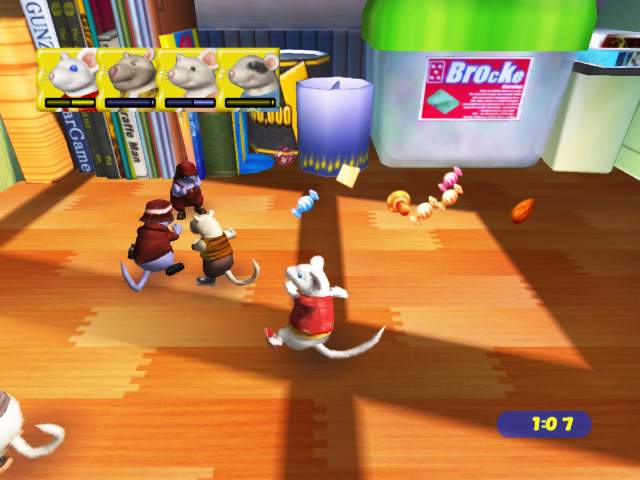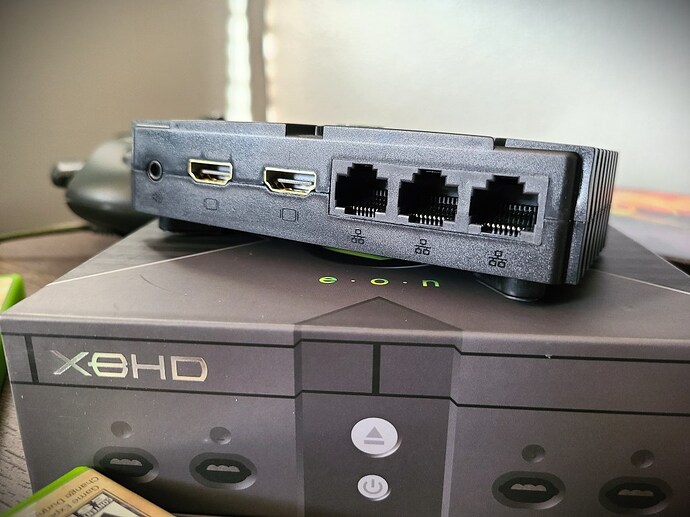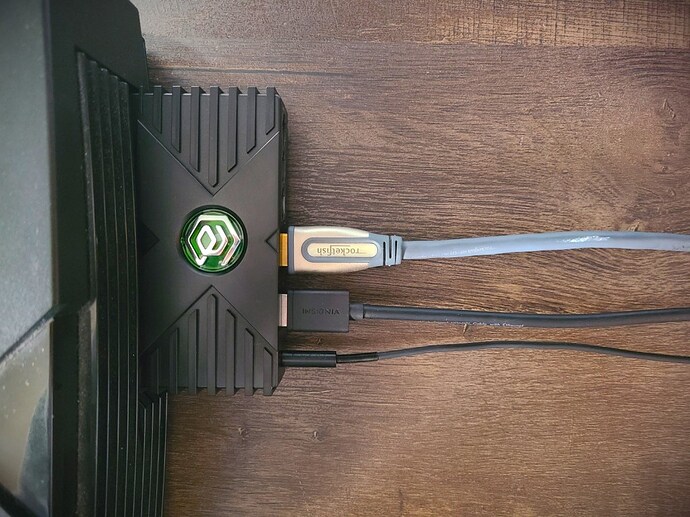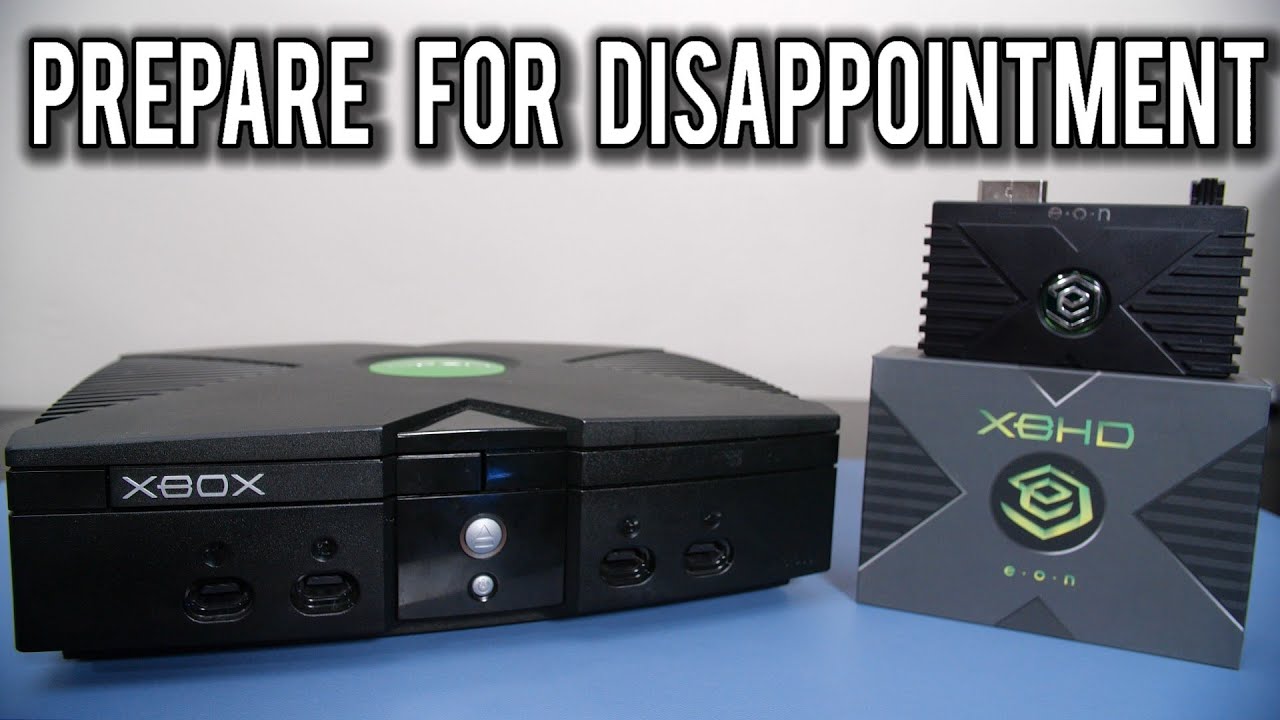Originally published at: Review | EON XBHD Plug-n-Play HD Adapter - XboxEra
I regret chucking out our Sony Trinitron. It’s been well over 13 years since our family decided to pick up that massive, 40-inch some 45-kilogram set and placed it out on the street. Maybe it was inevitable; the set was massive, and our house was small, and the games I was playing at the time were being built for the HDTV screen—all us CRT owners would end up getting a squished up, hard to see user interface for games the more we delved into the future of gaming on the Xbox 360 or PlayStation 3.
But over the last couple of years, I’ve been going back to older generations of games in search of cool concepts, how developers approached 3D and even 2D back then netted some interesting results. Developers have mastered the 3D camera today but go back even back to the early years of 360 gaming and you’ll find titles from developers that were still trying to figure out how to map whatever cool game mechanics to the controller and screen proper.
Now the original XBox was one of the earlier steps in this journey, a sort of midpoint between PC and console gaming at the time (feel free to yell at me about this) and it had a lot to offer: native online connectivity, an internal hard drive, and typically the best versions of multi-platform games during the 6th generation. Not only that, even PC-centric games made their way to the console: Morrowind, Doom 3, Half-Life 2, so on and so forth and they typically had specific changes made to accommodate the console. In Doom 3’s case, there’s still the original cooperative play locked away forever on the XBox.
I haven’t even touched on the console’s exclusives, either. Needless to say, I’ve been having a lot of fun with my sixth generation consoles as of late.

But here we are, 2023 nearing ’24. And now I have a similar problem: all these older OG XBox titles that I’ve been playing recently—Bionicle, Gunvalkyrie, Baldur’s Gate Dark Alliance, Sudeki, so on and so forth—are a jaggy, aliased mess on my only two telly sets. A 43 inch Vizio and a 55 inch Samsung, both 1080p and 4k respectively, unfortunately don’t do some of the console’s best looking games any justice. They’re not unplayable by any means (the XBox is way better off, trust me), but these titles were built specifically for old tellys and it only gets worse the further back you go. Banding, crushed blacks, poor legibility of text—these consoles and their component cables only go so far.
I’ve been trying to get around these as best I can. For the XBox, I’ve tried Hyperkin’s Panorama HDMI kit and though it worked, the video quality was so poor I cut my losses and switched back to component. I’ve looked into potentially modding an HDMI kit into the console, but I’ve never been quite comfortable with micro-soldering. For other consoles of this generation like the PlayStation 2 and the GameCube, emulation has improved significantly—Dolphin and PCSX2 particularly are fantastic, and especially the latter being way more than the ‘Kingdom Hearts emulator’ of the late 2000s. I could play those consoles’ titles quite comfortably and, if needed, jump to an actual system for some games that just quite didn’t work out in high resolution.
But that leaves the XBox, the lone wolf. The “off the shelf PC parts” mantra did the console no favors, its undocumented hardware containing Nvidia’s pride and joy of the early 2kays (the graphics processing and MCPX southbridge chip) as well a custom Pentium III. Emulation for the system was at a standstill for a decade plus until the last few years. Xemu has made great strides on this front (I’ve been able to beat a game on it!) but in comparison to other console emulators it still has ways to go in terms of setup, usability, and emulation accuracy.
The Magic Box
For the time being, I was limited to playing my XBox on a small little HDTV handed to me from a friend. Tube TVs have gotten pricey and limited in numbers, and even if I found the right set, I simply don’t have the room. And here I was last summer, thinking about finding someone to mod my console with an HDMI kit when I came across EON’s upcoming plug ‘n play HD adapter. At first I thought it was just a conversion kit of sorts, but to my surprise it does way more than that. Hell, I was kind of shocked.
EON Gaming’s XBHD, as the company calls it, is a plug ‘n play video and audio adapter. It connects to your consoles ethernet and AVID ports and outputs two HDMI out, a 3.5mm audio jack, and three ethernet ports. Not only does the XBHD make your XBox mirror video and audio output to two TVs, but it also becomes the ultimate LAN hub for other Xbox consoles (that includes those emulated titles on the Xbox One and Series systems plus the Xbox 360). But what’s even more mind-blowing is that the XBHD does not need a power cable.
It’s quite literally a plug ‘n play device. And it just works.
I plugged EON’s XBHD kit into my XBox about a month ago when the company shipped a kit to my house, complete with a nice shirt and sunglasses my mother instructed me to never wear. The kit was adorable and the XBHD itself doubly so. The hardware piece looks like a natural extension of the system, featuring the deep grooves and the giant X right in the middle. Of course, the XBHD naturally adds quite a bit to the already steep space requirements of the XBox, so that’s something to keep in mind. It also doesn’t ‘clip’ into the ports, but that’s not a downside; it’ll still fit snugly into the console’s ports.
But after that, all you need to do is make sure the console’s output is set to support 480p and 720p in the console’s settings, but not 1080i. And that’s it, you get a much cleaner picture compared to using component cables on an HDTV or the Hyperkin cable that ate my $30 and left me feeling very middled. But no matter what TV I plugged the kit into, I was immediately greeted with better text rendering and proper scaling support to my telly size. Even on my 4k Samsung Q65FN, the difference between using the included component cables and the XBHD was clearly visible.
The XBHD will output whatever the game outputs at. So, for example, Bionicle only supports 480i while Forza Motorsport sports 480p. In my experience, games that use interlaced output would exhibit vertical lines that appear purple. They’re more noticeable now thanks to the XBHD’s cleaner digital output, but this issue I was able to easily ignore. 480p outputting titles like Flatout 2 and Halo 2 were much more playable than before when I was using Microsoft’s High Definition AV Pack—I could actually see where I was driving in the former (still crashed my car a bunch) and Halo 2 looked better than ever on an XBox.
As for sound, the kit offers a 3.5mm audio jack that lets you plug in your headphones or an alternative speaker system. Personally, I don’t like to wear headphones while gaming, but the XBHD outputs a nice stereo mix without issues. But what really caught me by surprise was that the device could output 5.1 audio via HDMI, paired through my Yamaha receiver. Hearing the canticles in Halo: Combat Evolved for the first time on an XBox console was such an awesome feeling.
The XBHD also connects to other XBox consoles for LAN play. I couldn’t quite test this part with original XBox consoles, in part thanks to rising prices of retro consoles. But what I did get to test out was the dual HDMI output—I plugged in a second TV set and enjoyed a mirrored image, which I found good use for in Baldur’s Gate Dark Alliance with a friend. No input lag was experienced by either of us.
Dare I say it: the XBHD is black magic.
What is an XBox?
Up to this point, I’ve been spelling out the first XBox with a capital “b”. Maybe you noticed it, maybe you didn’t, but there’s a reason for that: the original XBox was a groundbreaking system and changed the landscape of console gaming that we know today. It wasn’t just powerful, and it wasn’t just the online components that its competitors arguably struggled to copy for the next several years. The XBox was home to, and still is, an active modding community that has truly fleshed out the functionality of what was just a $300 MSRP console. Emulation, XBMC (many know of this one now as Plex), full-fat Linux, and more. It’s also thanks to small teams of hardware makers like EON Gaming that continue to make it easier to game on our older systems today.
So, if the XBHD piqued your interest, whether it’s to take out the XBox from your closet or to buy one, here’s something I want you to consider: it’s time to softmod your console and it’s time to open that sucker up. The XBox is over 20 years old now and it’s important to maintain the boxes we have now because they are dying—these consoles suffer from capacitor plague, particularly one that affects the onboard time clock, and every day you leave an XBox unopened means another day where that console is likely going to die.
Softmodding your box is also important! Xbox Live has been shuttered for well over ten years now and on top of that, if your console’s hard drive fails, fixing that will be annoying if not impossible because of the way the drives are locked to the motherboard. Softmodding your XBox not only can save your console but you’ll be breathing new life into the system. Homebrew, custom skins, emulation, and more can be all yours. And even better? A group of amazing people have resurrected the XBox’s network and are slowly adding new games and Xbox Live’s original features. Best of all? It’s free: Check out Insignia, the Xbox Live replacement.
The XBox compatibility programme was a cool but sadly a short-lived venture. If we want to preserve the games we loved when we were younger, it’s up to us to do so. The retro gaming community is truly awesome, Eon Gaming’s XBHD is proof of that: it’s an adapter that extends the capabilities of an already truly amazing console. ∎
The review kit was given to us by the awesome folks at EON Gaming. EON Gaming’s XBHD plug ‘n play adapter is available at the following retailers below in the United States at an MSRP of $189.99. The company also has similar video adapters available for the GameCube and Nintendo 64 on their website.


